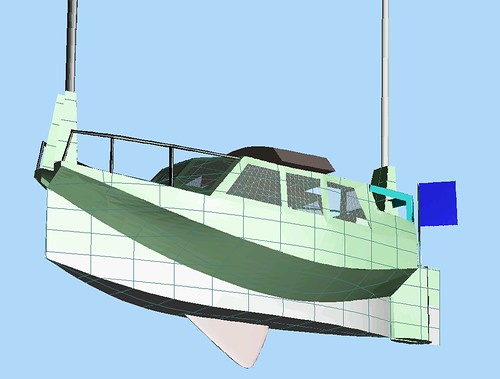 |
| One of many approaches to Hobo ReelsIs that a KIRKLAND Whiskey Bottle cork capping the bottom??? |
 |
| Rigged with hook, line and keeper |
Alive without breath, as cold as death;
Never thirsty, always drinking;
Clad in mail, never clinking.
-- One of Gollum's riddles from The Hobbit by J.R.R. Tolkein
I'm a-goin' fishin',
Yes I'm goin' fishin',
Baby goin' fishin' too!
-- From Fishin' Blues by Taj Mahal
Fishin'
I've got to say right off that I'm not a fool fer fishin'. In fact, if fish weren't an important part of our diet and livelihood, I'd never set a hook. Anke, on the other hand, you might say is 'avid'.
For me, I'm looking to maximize the efficiency and minimize the sport. To do as little harm as possible, both to those too small to keep and those whose life is taken for ours. To cultivate a spirit of humble gratitude for a fish's life. To console myself with the knowledge that they are fellow predators dancing in the web of life.
For many years, Anke and I have subsisted on smaller fish- rock cod, pink salmon, dolly varden (between a trout and salmon). Lacking refrigeration and unable to carry the weight of jarred fish, these are all we can eat while fresh. Now, however, we have the displacement and tools for jarring, and have our sights set on larger salmon, halibut and dogfish (a small shark).
But these still swim mostly in our future.
Our fishing rods and reels are accordingly very light. Usually the cheap-0 kid's reels. They live on deck, ready to hand, and last a few years. But they're seldom made for salt water and get cranky. And they tend to hang up on this and that at inopportune moments.
Recently, I stumbled across hobo reels! DIY, compact and effective.
Plastic container types offer near instant gratification and are very practical, since they take little or no modification and securely hold a lot of gear for any given size. Check out hobo reels made from PVC.
Wooden hobo reels - whether carved or turned on a lathe - are just plain beautiful. But first, a digression...
At a Renaissance Faire I was once enthralled by a fellow turning chair legs on a pole lathe. He used a living sapling bent over as a spring, sprung by depressing a foot plank. A line connecting the two turned around a pulley on the lathe, and as he worked the plank, spun the leg stock for shaping.
Unfortunately, it was otherwise a more or less standard metal lathe and, they being generally large and heavy, I hung on to the pole idea but roundfiled the lathe.Back to hobo reels... one of the vids shows a feller turning one on a home-made pole lathe! OOH... now we're talkin'. It was clear to see that I could dumb his full-feature lathe down to a mini lathe sized for the hobo reel. An hour of cobbling from materials on hand and this is the result:
 |
| Ever the Muse brings chaos in her wake! A bungee has replaced the spring pole. |
 |
| Stock is skewered between a fixed point (left) and an adjustable point (right). Two turns around the stock and it rotates around the points. |
Never having turned anything, I grabbed a rather funky piece of firewood to try it out. To my surprise, the result would have been a keeper if I'd used better material! On to HR2.0...
Go small, go simple, go fishin'!
 |
| My Spice Jar HR left and Lathe-Turned HR right |
*****
A few preliminary tips and tricks...
- I've found that a single hook (vs. a treble) at the end of a line is easy to stow. Lure and / or bobber can be loop tied (pass a bight of line through a hole and around the item to form a cow hitch) as desired. Hook can be set into holes drilled around the spool base, or stowed in storage cavities with its line pinned by the cap.
- Braided line (vs. monofilament) seems to work well, is much easier to handle and has enough friction for loop ties.
- Instead of carrying one or more bobbers, an eye-screw can attach any found bit of flotsam with enough buoyancy.
- For a bobber, consider a stick which can be thrown much farther than a typical bobber, hook and lure can be cast from a (rodless) hand reel.
- If using a container, consider one with a pronounced flare (like one end of a spool) toward the casting end. This helps lift clear of the wound line while casting, reducing friction.
- A throat gorge (spine of wood, bone or metal sharpened at both ends and attached from the middle) is far easier to improvise than a hook. A fish swallows the baited stick which then toggles sideways to set. Size for target fish.
Our go-to fishing sources:
Indian Fishing Methods by Hillary Stewart
Living Off the Sea by Charlie White
A Coupla good, how-to vids:
And check out this guy's Rodless Reel!


